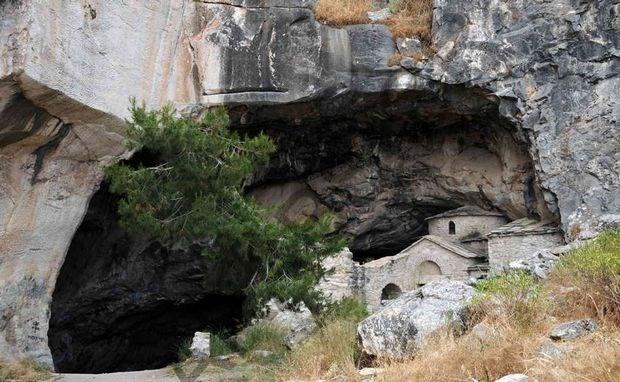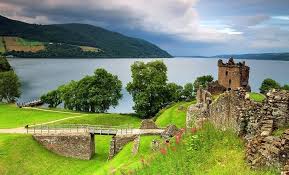The wonders of nature are waiting us to be explored. Between science and myths, the truth remains hidden in the corners of the world.
Devil’s Cave (Natvilis Cave)
Location and History
Devil’s Cave, also known as Natvilis Cave, is located near Athens on Mount Penteli in Greece. It consists of tunnels that extend beneath the mountain, one of which leads to a small pool of water. Ancient civilizations are believed to have used the cave as a worship site for a Greek god who was half-human, half-goat.
Origins of the Cave’s Name
In the 1800s, a group of robbers used the cave as a hideout under the leadership of a man named Natvilis. Since then, the cave has been associated with his name and is now known as Devil’s Cave or Natvilis Cave.
Mysterious Phenomena
Visitors and local residents have reported several strange occurrences around the cave, including:
- Ghostly apparitions and unexplained lights emerging from within.
- Sightings of sheep-like creatures that vanish when approached.
- Cameras malfunctioning inside the cave for no apparent reason.
Excavation Projects and Abrupt Stops
In 1980, authorities closed the cave to visitors for an underground tunnel expansion. Rumors suggest that NATO was involved in the project. However, the work was suddenly abandoned without explanation, leaving heavy equipment inside the cave.
Devil’s Cave remains a place of intrigue, where myths and mysteries intertwine. It continues to attract explorers and those drawn to the unknownwn.

Loch Ness: Mystery and Legend
- Location and Geography:
Loch Ness is one of Scotland’s largest and most famous lakes, located near Inverness in the Scottish Highlands. It stretches 37 kilometers (23 miles) and holds the largest volume of fresh water of any lake in Britain.
The Legend of the Loch Ness Monster
The lake became famous due to the legend of ‘Nessie’, a mysterious sea creature believed to inhabit its depths. Historians trace the first alleged sighting back to the 6th century AD, but the legend gained worldwide attention in 1934 when a photographer captured an image of a long-necked creature floating on the water’s surface. Later, researchers exposed the photograph as a hoax, yet reports of ‘Nessie’ sightings continue to this day.
Scientific Research
Scientists have explored the lake using sonar and submarines, but no conclusive evidence of the monster’s existence has been found.
In 2019, a genetic study detected high levels of eel DNA in the lake’s waters. This led some researchers to theorize that ‘Nessie’ sightings might actually be giant eels rather than a mythical monster.
Tourism in Loch Ness
Loch Ness attracts thousands of visitors each year, offering a range of activities, including:
- Boat tours to explore the lake’s depths and stunning scenery.
- Urquhart Castle, a medieval fortress overlooking the water.
- The Loch Ness Centre, where visitors can learn about the legend and scientific investigations.
Conclusion
Whether ‘Nessie’ is real or just a myth, Loch Ness remains one of the world’s most mysterious and fascinating destinations. Its breathtaking landscapes and legendary tales continue to captivate explorers, adventurers, and those seeking the unknowntination for adventure and myth enthusiasts.



Giant’s Causeway – Ireland: A Natural Wonder and Mysterious Legends
- Location and Geography:
The Giant’s Causeway is located on the northern coast of Northern Ireland, near the town of Bushmills. This site is famous for its hexagonal basalt columns, which look like giant stepping stones. They stretch across 4.8 kilometers of coastline, creating a stunning view.
Formation of the Giant’s Causeway
Approximately 60 million years ago, a massive volcanic eruption caused lava to flow. As it cooled rapidly, the lava contracted, forming the geometric basalt columns that we see today. In fact, there are more than 40,000 of these columns, some rising up to 12 meters in height.
The Legendary Giants
According to Irish mythology, Finn MacCool, a giant, built the causeway to cross the sea and face his Scottish rival, Benandonner. However, when Finn saw how massive Benandonner was, he fled back to his home. His wife, being clever, disguised him as a baby. When Benandonner saw the “child,” he panicked. He thought Finn’s father must be even larger. Fearful, Benandonner fled back to Scotland, destroying the causeway behind him. As a result, only the part of the causeway in Ireland remains.
Conclusion
Whether you believe in the legend or prefer the scientific explanation, the Giant’s Causeway remains one of Northern Ireland’s most iconic landmarks. The unique geological formations and rich folklore make it a must-see destination. For nature lovers and history enthusiasts alike, it offers an unforgettable experience.


good